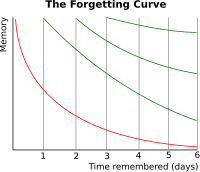In 10 days, we start our summer institute on online teaching and learning. This is an experiment of sorts for my institution. For the first time, our institute this year will be the start of an upcoming year-long process to help a cohort of faculty develop and teach online classes. Following the institute, each member will attend the Quality Matters “Build Your Online Course” and continue to work as a cohort as they develop and refine their course, then teach it the first time. They will also meet physically three times in the fall and stay connected virtually through a Ning site.
It sounds good on paper (or whiteboard)…but I am pondering this real world of faculty development as I considered a couple of interesting blog posts that crossed my Google Reader this week.
The first was Harold Jarche‘s “Once More, Across That Chasm.”

As Jarche’s graphic above illustrates, there is a chasm that must be crossed before the majority adopt new technologies or new practices. He suggests that the growth of informal learning and integration of learning into work could bridge this chasm. That is precisely what our intentions are with our Ning site.
For faculty who have never taught online, transitioning from classroom instruction to online instruction in many ways involves a similar chasm that needs to be bridged. Our summer institute gives us an opportunity to lay a foundation and build momentum, but I worry that this momentum could be lost if we do not work to sustain the community. In many ways, our efforts will be focused on developing an online learning community with this cohort through the next year that models the learning communities we hope they will build in their online courses.
Jarche also pointed me to another post by Charles Jennings, “ID – Instructional Design or Interactivity Design in an interconnected world?” Jennings noted:
“The vast majority of structured learning is content-rich and interaction-poor. That’s understandable in the context of a 20th century mindset and how learning professionals have been taught to develop ‘learning’ events. But it simply isn’t appropriate for today’s world.”
 He goes on to state that learning is about action and behaviors, not how much information one retains. He cites the exponential curve of forgetting first postulated by Ebbinghaus where 50% of context-information is lost in the first hour after acquisition if there is no opportunity to reinforce it with practice.
He goes on to state that learning is about action and behaviors, not how much information one retains. He cites the exponential curve of forgetting first postulated by Ebbinghaus where 50% of context-information is lost in the first hour after acquisition if there is no opportunity to reinforce it with practice.
I am not too worried about this during the week of the institute, as we have loaded our institute with a fair balance of information and actions. We hope to establish some practices with the cohort through the week regarding informal learning through the use of Twitter and our Ning site. What I am pondering now are the actions we need to provide to continue the momentum beyond the week in June when our cohort is physically present. They will be interacting in the QM online course 6 weeks after the institute, and will meet together again 6 weeks after that. That is an eternity in the online world – and is another chasm that needs to be bridged.
For the past two years, we have talked a lot about networked learning. This will be a real opportunity to put actions to these concepts and work through the Ning site to create a network with faculty members developing both the courses and the practices online that will support these courses. In many ways, what we are attempting with this cohort mirrors what we would like to see them model in the online courses that they develop.
As Jenning’s noted:
“We need designers who understand that learning comes from experience, practice, conversations and reflection, and are prepared to move away from massaging content into what they see as good instructional design. Designers need to get off the content bus and start thinking about, using, designing and exploiting learning environments full of experiences and interactivity.”
Good advice as we consider how to use the Ning to build community and engagement over the summer and into the fall.
{Graphics linked from Jache blog and Wikipedia}
![Reblog this post [with Zemanta]](http://img.zemanta.com/reblog_e.png?x-id=d52cba14-f16c-4ec9-987f-0d1643f3e4f8)